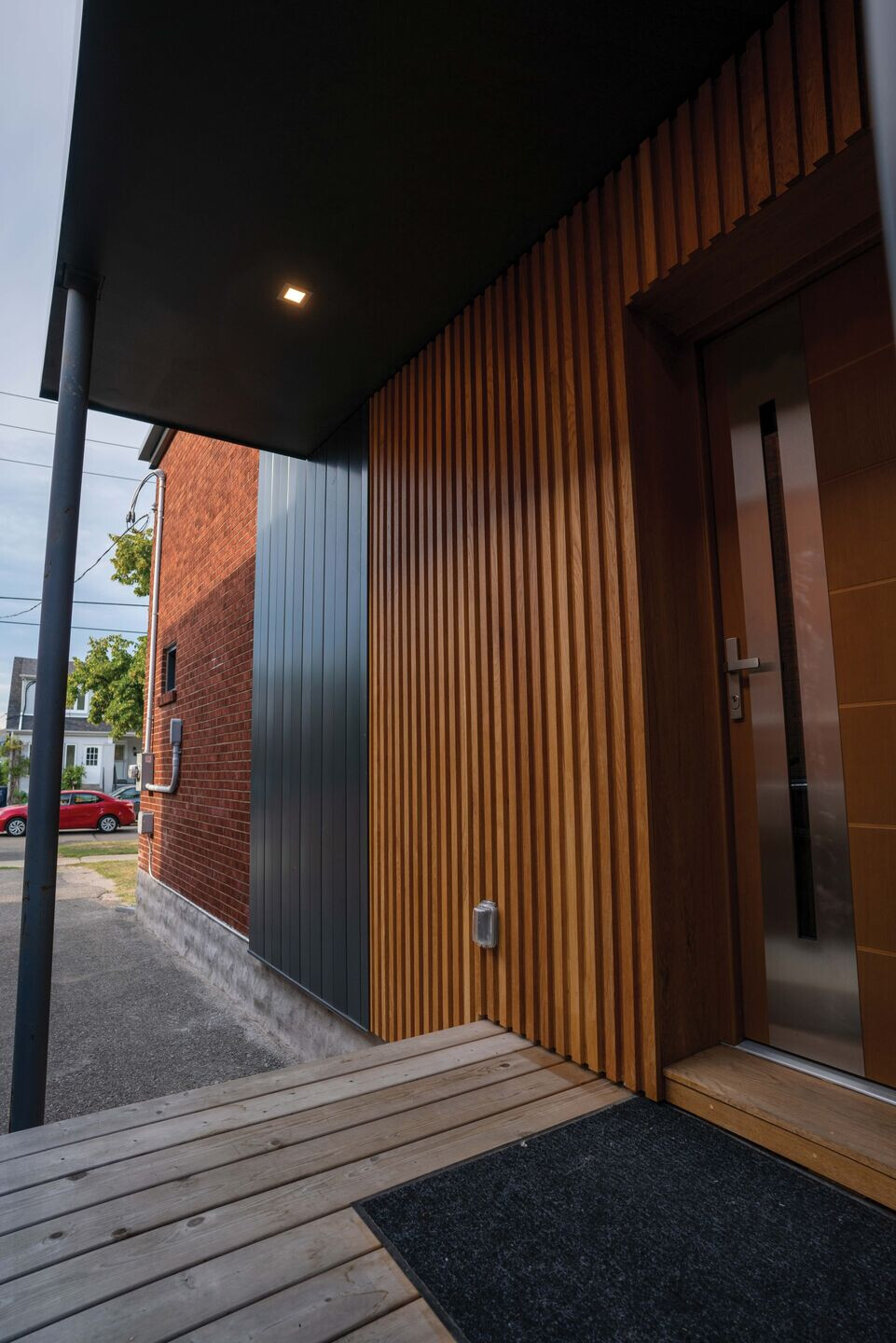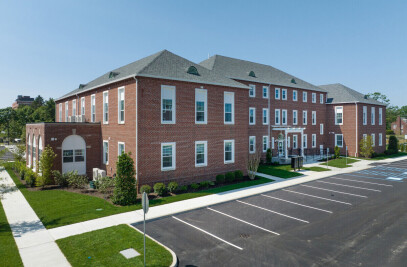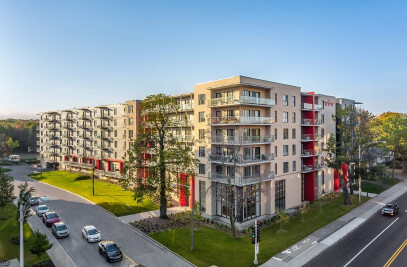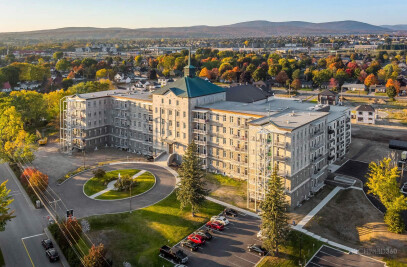Built for a professional couple in Toronto, the Sammon House is designed to withstand blackouts while providing a healthy indoor environment. The retrofit of the 1940s house targets EnerPHit Certification from the Passive House Institute, is fully electrified, and will be Net Zero when, in future, PV panels are installed on the roof of the addition.
As an age-in-place strategy, the main living spaces are located on the ground floor, including the main bedroom, kitchen, living room, laundry, and washroom. The second floor has a working space/family room and a second bedroom with a full washroom for guests.

The lot is located 1,640 feet from a subway station, 328 feet from a bus stop, and is close to a main artery that has a bicycle path. A new landscape with spread pavers and gravel maintains the water absorption of the ground, and site grading ensures that run-off drains away from the house.
About 80% of the original brick enclosure and roof was maintained to preserve the character of the neighborhood and the history of the house. The inside was stripped back to the framing and additional framing inserted and insulated with blown cellulose.
A three-layer airtight, vapor-permeable membrane was wrapped around the existing joist ends of the first floor to create a continuous membrane transition with the wall framing. A new second floor was built inside of the new framing and membrane. All livable spaces have tilt and turn windows with 90% of the above-grade areas having natural light coming either from the windows, clerestory, or skylight. An operable skylight improves the cross-ventilation through the stack effect.

A wide glazed area in the south, where the main living space is located, not only improves solar gain but also provides an enjoyable, sun-washed space to spend time during the winter afternoons. Hardwood flooring was added to all the livable spaces and light-colored paint for the walls to improve light-reflection. A wood veneered staircase was chosen to maintain a continuity of material throughout all the horizontal planes.
Super-insulated walls plus a very airtight building provides the basis to reach Passive House levels of energy use. Energy modelling was used to optimize the solar gain on the south-facing windows, including a triangular clerestory at the cut root. A wastewater heat recovery pipe pre-heats the incoming water for the hot water tank.
About 75% of the insulation was blown cellulose. The insulation around the windows was either mineral wool or expanded foam tape that comes pre-pressed and expands without any binding. The basement was fully excavated with rigid foam insulation added below the new cast slab. New wood framing in the walls and floor joist cavities were insulated with mineral wool to help avoid any potential moisture degradation and the whole finished with an intelligent vapor membrane that will allow the wall assembly to dry inwards in case of high moisture-content.
The house is fully electric with a heating/cooling system based on a heat pump that works up to -15 degrees Celsius and has an airtight direct vented fireplace for extreme weather situations.

The ventilation system includes a highly efficient, energy recovery ventilator. Normally, this would be sufficient to create a healthy indoor space within such a tight home; however, in this case, the client has severe dust allergies. In order to protect the client, and maintain their health, ZON Engineering decided to supplement the ventilation system with a HEPA filtration system by Fantech.
The HEPA filtration system provides full-spectrum air cleaning throughout the entirety of the house, up to 3,000 sq ft. The system captures and removes pollutants and allergens from the air—0.3 microns and larger—that would otherwise impact the client’s health. The ventilation system and HEPA filtration system work in tandem to keep the air fresh and clean while optimizing the energy required to do so. The indoor air quality monitor shows very high quality of air, with CO2 levels similar to exterior throughout the day and no VOCs. It has to be noted that, per the clients requirement, no spray foam insulation was used in the project and that the materials and finishes were carefully selected.
Currently, the energy intensity of 32 kWh/m2/yr of site energy is very close to the energy model calculations. This value is half of the highest tier of the Toronto Green Standard targets for medium and large residential buildings (70-75 kWh/m2/yr). If ever desired, the building could be easily demounted, beginning first with a vacuum system to extract the blown cellulose.
Fantech would like to congratulate all involved on a successful project and we appreciate our product being a part of such a wonderful project!

Additional Credits
Passive House Consultant/Designer – Green Tectonics
Mechanical Engineer – ZON Engineering and Mentor Xhumri
Commissioning Agent – ZON Engineering
Project Performance
– Energy consumption based on model: 6,800 kWh/year $1,088, $90/month estimated on phpp
– Real consumption estimated based on current bills: 7,664 kWh/year - $1,226
or $102/month (13% difference with the energy model)
– Energy Intensity: 3 kWh/sq ft/year:
– Building gross floor area: 2506 sq ft / treated (Passive House) floor area: 1830 sq ft
See the original article in SABMag/Ontario FOCUS about this project https://www.cagbc.org/news-insights/regional-focus/#ontario-focus





































